Eberechi Eze is one of the most exciting attacking midfielders in the Premier League – and his performances have not gone unnoticed.
Linked with potential moves to Arsenal and Tottenham, the Crystal Palace star has become the creative heartbeat of his team, guiding them to an unforgettable FA Cup triumph last season. His stunning winner against Manchester City in the final only cemented his reputation as a player ready for the big stage.
But how good is Eze compared to the very best attacking midfielders in the EPL? To find out, we compare him with some of the league’s top creative forces from last season:
- Eberechi Eze (Crystal Palace)
- Morgan Rogers (Aston Villa)
- James Maddison (Tottenham Hotspur)
- Cole Palmer (Chelsea)
- Martin Ødegaard (Arsenal)
- Bernardo Silva (Manchester City)
- Bruno Fernandes (Manchester United)
Creativity
When it comes to attacking midfielders, creativity is everything. The best No.10s are judged on their ability to unlock defenses, deliver killer passes, and create chances out of nothing.
Assists per 90
Assists per 90 minutes might not tell the full story – especially if a midfielder plays with wasteful strikers – but it still provides a solid indicator of just how often they carve open opponents.
So, who ruled the Premier League in terms of creativity last season? Let’s break it down:
| Player | Club | Assists per 90 |
|---|---|---|
| James Maddison | Tottenham Hotspur | 0.35 |
| Martin Ødegaard | Arsenal | 0.31 |
| Bruno Fernandes | Manchester United | 0.30 |
| Morgan Rogers | Aston Villa | 0.29 |
| Eberechi Eze | Crystal Palace | 0.28 |
| Cole Palmer | Chelsea | 0.23 |
| Bernardo Silva | Manchester City | 0.13 |
James Maddison topped the charts with 0.35 assists per 90, showcasing why he’s Tottenham’s creative engine. Arsenal captain Martin Ødegaard (0.31) and Manchester United’s Bruno Fernandes (0.30) were close behind.
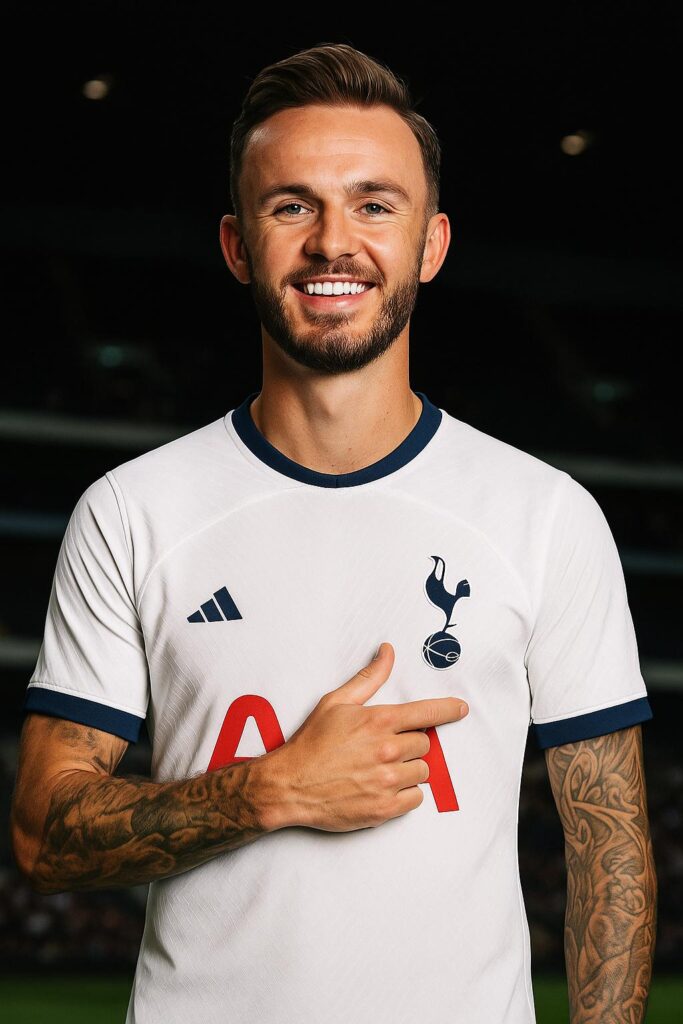
Aston Villa’s Morgan Rogers impressed with 0.29, while Eberechi Eze (0.28) wasn’t far off despite playing for a less dominant Crystal Palace team. That’s a huge statement – imagine what Eze could produce with clinical finishers at Arsenal or Tottenham.
At the bottom, Chelsea’s Cole Palmer (0.23) underperformed compared to his attacking peers, while Bernardo Silva’s surprisingly low 0.13 highlights that creativity isn’t just about technical brilliance but also about delivering consistent final passes.
Eze is already holding his own against the EPL’s best creators. If he joins a bigger club with better strikers, his assist numbers could easily jump into the top three – and he might just be a future contender for the Premier League’s creativity crown.
Key Passes per 90
If assists show the end product, key passes reveal a player’s true creative influence. Unlike assists, key passes per 90 don’t rely on strikers finishing their chances – they measure how often an attacking midfielder puts teammates in shooting positions.
This makes it a perfect metric to judge playmakers in weaker teams, as it shows their ability to constantly unlock defenses, even if their teammates waste the chances.
So, who was the Premier League’s most dangerous chance-creator last season? Let’s find out.
| Player | Club | Key Passes per 90 |
|---|---|---|
| Bruno Fernandes | Manchester United | 2.71 |
| Cole Palmer | Chelsea | 2.45 |
| Martin Ødegaard | Arsenal | 2.44 |
| James Maddison | Tottenham Hotspur | 2.04 |
| Eberechi Eze | Crystal Palace | 2.02 |
| Bernardo Silva | Manchester City | 1.79 |
| Morgan Rogers | Aston Villa | 1.47 |
Bruno Fernandes topped the charts with 2.71 key passes per 90, underlining why he remains Manchester United’s creative leader. Chelsea’s Cole Palmer (2.45) and Arsenal’s Martin Ødegaard (2.44) were almost neck and neck.
James Maddison came in fourth with 2.04, but here’s the key takeaway: Eberechi Eze (2.02) is right behind him despite playing for a mid-table Crystal Palace side (I know Tottenham Hotspurs were almost relegation battlers last season. lol)
Even more impressive, Eze ranks above Bernardo Silva (1.79) and Morgan Rogers (1.47) – two players who played in far better attacking sides.
Eze isn’t far off the EPL’s elite creators either – Bruno Fernandes only beats him by 0.69 key passes per 90. This shows Eze is already operating at a top level, and in a bigger team with better finishers, his assist numbers could explode.
Through Balls per 90
If key passes show consistency, through balls highlight pure vision and risk-taking. A well-timed through ball can slice open an entire defense, creating one-on-one chances for strikers. It’s a metric that reveals which attacking midfielders are brave enough to attempt those defense-splitting passes.
So, which EPL playmakers were the true masters of the killer ball last season?
| Player | Club | Through Balls per 90 |
|---|---|---|
| Martin Ødegaard | Arsenal | 0.97 |
| Bruno Fernandes | Manchester United | 0.92 |
| Morgan Rogers | Aston Villa | 0.64 |
| Cole Palmer | Chelsea | 0.62 |
| James Maddison | Tottenham Hotspur | 0.60 |
| Eberechi Eze | Crystal Palace | 0.38 |
| Bernardo Silva | Manchester City | 0.13 |
Martin Ødegaard led the way with 0.97 through balls per 90, proving why he’s regarded as a key part of Arsenal’s creative heartbeat. Bruno Fernandes wasn’t far behind with 0.92, consistently threading passes into dangerous areas.
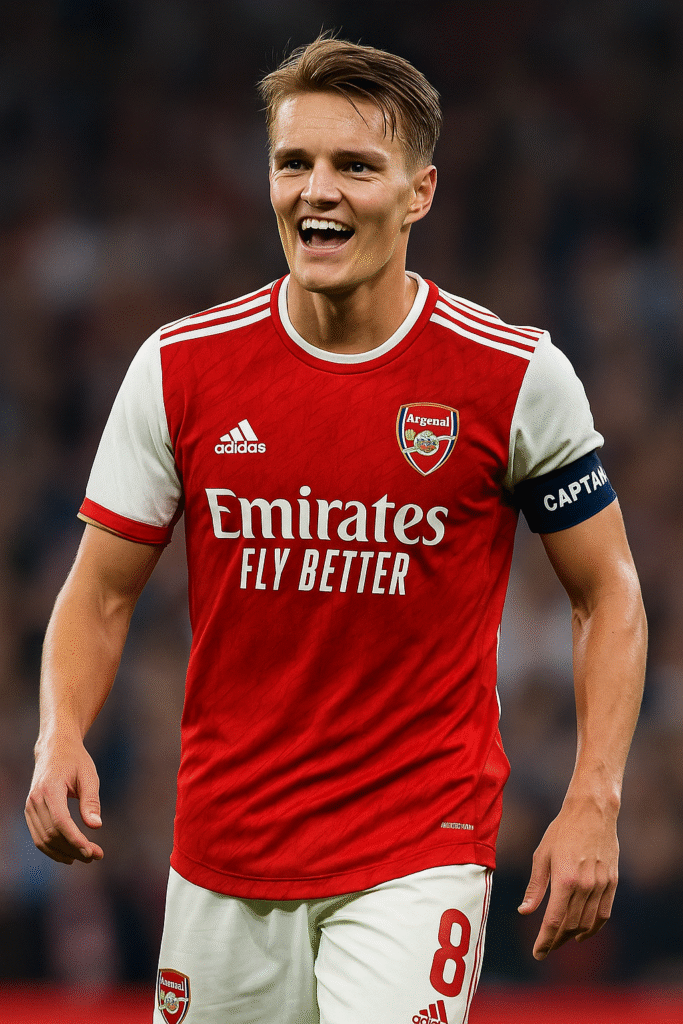
Morgan Rogers (0.64), Cole Palmer (0.62), and James Maddison (0.60) formed the chasing pack, all showing strong attacking intent.
At the lower end, Eberechi Eze managed 0.38 through balls per 90, ranking above only Bernardo Silva (0.13). This suggests that while Eze excels in other creative metrics, he is less aggressive when it comes to attempting risky, defense-splitting passes. It remains to be seen if his numbers can improve if he played for a much-better side than The Eagles.
Goal Threat – Who Finishes Best?
Finally, creativity is nothing without end product. Attacking midfielders who score regularly are worth their weight in gold. An attacking midfielder who helps to score is an added advantage to his team.
Non-Penalty Goals per 90 – Who’s the Biggest Scoring Threat?
| Player | Club | Non-Penalty Goals per 90 |
|---|---|---|
| James Maddison | Tottenham Hotspur | 0.45 |
| Cole Palmer | Chelsea | 0.31 |
| Eberechi Eze | Crystal Palace | 0.24 |
| Morgan Rogers | Aston Villa | 0.23 |
| Bruno Fernandes | Manchester United | 0.15 |
| Bernardo Silva | Manchester City | 0.13 |
| Martin Ødegaard | Arsenal | 0.08 |
James Maddison was the most clinical with 0.45 non-penalty goals per 90, followed by Cole Palmer (0.31). Eze ranked mid-table with 0.24, scoring more often than big names like Bruno Fernandes (0.15) and Ødegaard (0.08).
Eze may not be Maddison-level, but he’s a respectable scoring threat for a creative midfielder and has outperformed Bruno Fernandes in this metric. With better service and more possession in a top side, his numbers could easily climb.
Passing Ability
For an attacking midfielder, passing accuracy is more than just retaining possession – it’s about delivering precise, meaningful passes that keep attacks flowing.
Pass accuracy (%)
One wrong pass in the final third can destroy an entire attack in an instant – and even worse, it can gift the opposition a counter-attack while your teammates are caught high up the pitch.
The very best playmakers know this fine line: they dare to take risks, but only when the reward is worth it – balancing bold creativity with ice-cold passing accuracy.
| Player | Club | Pass Accuracy (%) |
|---|---|---|
| Bernardo Silva | Manchester City | 86.8% |
| Martin Ødegaard | Arsenal | 82.4% |
| James Maddison | Tottenham Hotspur | 81.3% |
| Cole Palmer | Chelsea | 77.0% |
| Bruno Fernandes | Manchester United | 76.1% |
| Eberechi Eze | Crystal Palace | 74.2% |
| Morgan Rogers | Aston Villa | 73.2% |
Bernardo Silva was the clear leader with an impressive 86.8% pass accuracy, showing why Pep Guardiola trusts him in City’s midfield ticking.
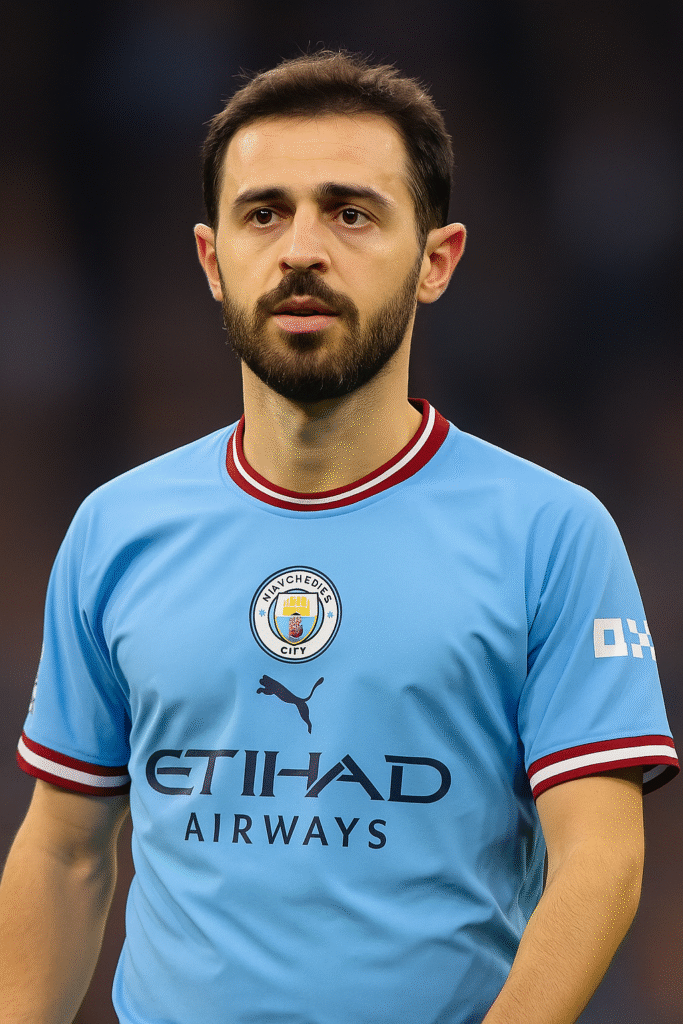
Arsenal’s Martin Ødegaard (82.4%) and Spurs’ James Maddison (81.3%) completed the top three, combining creativity with precision.
At the other end, Morgan Rogers had the lowest pass accuracy (73.2%), while Eberechi Eze ranked just above him with 74.2%. However, the gap between Eze and some of the league’s biggest names is surprisingly small – only 1.9% less than Bruno Fernandes (76.1%) and 2.8% behind Cole Palmer (77.0%).
This shows Eze isn’t careless with possession; his slightly lower accuracy reflects his willingness to attempt riskier passes in a Crystal Palace side that lacks the quality and movement of the elite teams the other players represent.
Progressive Passing Distance – Who Drives the Ball Forward the Most?
Progressive passing distance measures how far a player moves the ball towards the opposition’s goal through passing – a true indicator of how aggressive and forward-thinking a midfielder is. The higher the number, the more a player drives his team up the pitch, turning possession into real attacking pressure.
So, who among the EPL’s top playmakers was the most proactive ball-progressor last season?
| Player | Club | Progressive Passing Distance (Yards) |
|---|---|---|
| Bruno Fernandes | Manchester United | 319.03 |
| James Maddison | Tottenham Hotspur | 250.15 |
| Martin Ødegaard | Arsenal | 211.35 |
| Cole Palmer | Chelsea | 158.25 |
| Bernardo Silva | Manchester City | 151.72 |
| Eberechi Eze | Crystal Palace | 123.11 |
| Morgan Rogers | Aston Villa | 96.16 |
Bruno Fernandes dominated this category, launching 319.03 yards of progressive passes per 90, showing just how much he pushes Manchester United forward. James Maddison followed with 250.15 yards, while Martin Ødegaard (211.35 yards) remains Arsenal’s key engine for advancing the ball.
Cole Palmer (158.25 yards) and Bernardo Silva (151.72 yards) offered steady progression, but the lower end is where things get interesting: Eberechi Eze registered just 123.11 yards per 90, only above Morgan Rogers (96.16 yards).
Eze’s numbers show he’s more of a short, link-up passer than a long-range ball-progressor – likely a result of playing in a Crystal Palace side that doesn’t dominate possession or push high up the pitch as much as top clubs.
However, if he moves to a team like Arsenal, fans will expect him to take more risks and drive the ball forward with greater intent – especially if he hopes to compete with Ødegaard for the attacking midfield role.
Progressive Ball Carrying:Who Drives Forward With the Ball at Their Feet?
Passing isn’t the only way to progress play – elite attacking midfielders can hurt opponents by carrying the ball forward themselves. Progressive carrying distance measures how many yards a player drives his team forward while keeping close control of the ball – a true sign of dribbling confidence and attacking intent.
So, who was the EPL’s most effective ball carrier among attacking midfielders last season?
| Player | Club | Progressive Carrying Distance (Yards) |
|---|---|---|
| Martin Ødegaard | Arsenal | 146.01 |
| Bernardo Silva | Manchester City | 136.35 |
| Bruno Fernandes | Manchester United | 115.29 |
| James Maddison | Tottenham Hotspur | 113.38 |
| Cole Palmer | Chelsea | 107.29 |
| Morgan Rogers | Aston Villa | 93.41 |
| Eberechi Eze | Crystal Palace | 82.77 |
Martin Ødegaard topped the list with an impressive 146.01 yards per 90, underlining why he has been one of Arsenal’s main creative driver since his arrival from La Liga.
Bernardo Silva followed closely with 136.35 yards, showing his usual elegance in carrying the ball through tight spaces. Bruno Fernandes (115.29 yards) and James Maddison (113.38 yards) also proved effective in moving their teams up the pitch.
At the lower end, Eberechi Eze had the shortest progressive carrying distance with 82.77 yards per 90, falling behind even Morgan Rogers (93.41 yards).
Eze’s relatively low progressive carrying numbers suggest he relies more on short bursts of movement and passing combinations rather than consistently driving forward with long carries. If he wants to match players like Ødegaard, he will need to become more assertive in carrying the ball into advanced areas – especially if he makes a move to a top-six club where ball progression is crucial for unlocking low-blocks.
Aerial Dominance – Who Rules the Skies?
Set-pieces often decide tight games, and having attacking midfielders who can win aerial duels is a hidden weapon for any team. Aerial dominance isn’t just about height – it’s about anticipation, timing, and bravery when challenging for 50-50 balls.
Additionally, aerial dominance is crucial in defensive situations, helping players clear danger, win second balls, and protect their goal during set-pieces. So, which of these top EPL creators were most effective in the air last season?
| Player | Club | Aerials Won per 90 |
|---|---|---|
| Bruno Fernandes | Manchester United | 0.66 |
| Morgan Rogers | Aston Villa | 0.38 |
| Martin Ødegaard | Arsenal | 0.31 |
| James Maddison | Tottenham Hotspur | 0.25 |
| Eberechi Eze | Crystal Palace | 0.24 |
| Bernardo Silva | Manchester City | 0.17 |
| Cole Palmer | Chelsea | 0.06 |
| Player | Club | % of Aerial Duels Won |
|---|---|---|
| Martin Ødegaard | Arsenal | 53.3% |
| Bruno Fernandes | Manchester United | 44.0% |
| James Maddison | Tottenham Hotspur | 41.7% |
| Bernardo Silva | Manchester City | 33.3% |
| Cole Palmer | Chelsea | 22.2% |
| Morgan Rogers | Aston Villa | 20.0% |
| Eberechi Eze | Crystal Palace | 15.9% |
Bruno Fernandes was dominant in the air, winning 0.66 aerial duels per 90, far ahead of everyone else. Morgan Rogers (0.38) and Martin Ødegaard (0.31) also stood out, and they were the only other players to win over 0.3 aerials per 90.
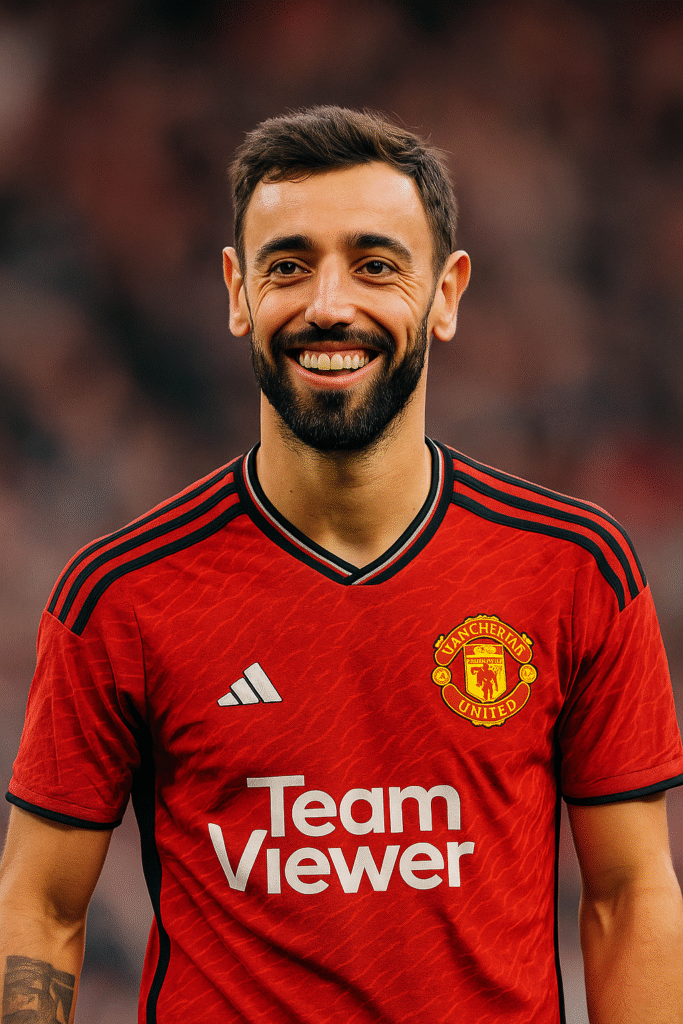
When it comes to success rate, Ødegaard was outstanding, winning 53.3% of his aerial duels – the only player to win more than half of his challenges. Fernandes (44.0%) and Maddison (41.7%) also showed good timing and positioning in the air.
At the lower end, Eberechi Eze ranked near the bottom in both metrics, winning just 0.24 aerials per 90 and only 15.9% of his aerial duels – the lowest in this comparison group.
Eze’s numbers confirm that aerial duels are not his strength – a trait less crucial for a creative attacking midfielder, but one he could still improve on to help his team especially during set-pieces. If he wants to reach Ødegaard’s all-round influence, developing better timing and physical presence in aerial challenges would add another layer to his game.
Defensive Duties
Winning challenges, recovering balls, and minimizing mistakes can make a huge difference, especially in high-pressing systems. Let’s see who stood out defensively and who struggled.
Challenges Lost per 90
Losing challenges often highlights poor timing or physical weakness in duels. The lower the number, the better a player is at timing his tackles and choosing when to engage.
| Player | Club | Challenges Lost per 90 |
|---|---|---|
| Bruno Fernandes | Manchester United | 1.52 |
| Bernardo Silva | Manchester City | 1.04 |
| James Maddison | Tottenham Hotspur | 1.00 |
| Martin Ødegaard | Arsenal | 0.81 |
| Eberechi Eze | Crystal Palace | 0.66 |
| Morgan Rogers | Aston Villa | 0.66 |
| Cole Palmer | Chelsea | 0.42 |
Bruno Fernandes struggled the most, losing 1.52 challenges per 90, followed by Bernardo Silva (1.04) and James Maddison (1.00). On the other end, Eberechi Eze (0.66) and Morgan Rogers (0.66) were among the most composed in duels, while Cole Palmer was the standout with just 0.42, showing excellent timing and decision-making.
Ball Recoveries per 90 – Who Wins the Ball Back Most?
Recoveries show work rate and anticipation – crucial traits for midfielders in both attacking transitions and defensive phases.
| Player | Club | Ball Recoveries per 90 |
|---|---|---|
| Bruno Fernandes | Manchester United | 6.35 |
| Eberechi Eze | Crystal Palace | 5.08 |
| James Maddison | Tottenham Hotspur | 3.78 |
| Martin Ødegaard | Arsenal | 3.75 |
| Bernardo Silva | Manchester City | 3.61 |
| Morgan Rogers | Aston Villa | 3.44 |
| Cole Palmer | Chelsea | 2.99 |
Bruno Fernandes was relentless defensively, winning back the ball 6.35 times per 90. Surprisingly, Eberechi Eze came second with 5.08, showing strong defensive work for a creative midfielder – higher than Ødegaard, Maddison, or Bernardo Silva.
Eze combines good timing in challenges (0.66 lost per 90, among the best) with impressive ball recoveries (5.08 per 90). While not as tireless as Bruno Fernandes, he proves he can contribute defensively.
Errors
Miscontrols and dispossessions show how secure a player is when receiving or holding the ball.
Miscontrols per 90 – Who Handles Pressure Best?
| Player | Club | Miscontrols per 90 |
|---|---|---|
| Morgan Rogers | Aston Villa | 3.29 |
| Cole Palmer | Chelsea | 2.00 |
| Eberechi Eze | Crystal Palace | 1.91 |
| Martin Ødegaard | Arsenal | 1.47 |
| Bruno Fernandes | Manchester United | 1.28 |
| James Maddison | Tottenham Hotspur | 1.14 |
| Bernardo Silva | Manchester City | 0.84 |
Bernardo Silva was outstanding with just 0.84 miscontrols per 90, showing his trademark close control. Eze (1.91) was mid-table, better than Palmer (2.00) and Rogers (3.29) but far from elite ball security standards.
Dispossessions per 90 – Who Loses the Ball Least?
| Player | Club | Dispossessions per 90 |
|---|---|---|
| Morgan Rogers | Aston Villa | 2.14 |
| Eberechi Eze | Crystal Palace | 1.56 |
| Martin Ødegaard | Arsenal | 1.55 |
| James Maddison | Tottenham Hotspur | 1.24 |
| Bruno Fernandes | Manchester United | 1.28 |
| Bernardo Silva | Manchester City | 1.15 |
| Cole Palmer | Chelsea | 1.04 |
Cole Palmer was the most secure with just 1.04 dispossessions per 90. Eze (1.56) is slightly worse than Ødegaard (1.55) but far safer than Morgan Rogers (2.14), showing he’s fairly reliable in possession.
Eze’s ball security is decent – better than many mid-table creators but below elite standards like Bernardo Silva. If he joins a possession-heavy side like Arsenal, improving his close control under pressure will be key to maintaining high-tempo play.
Conclusion – Eze’s Promise Among the EPL’s Elite
Eberechi Eze has shown he can hold his own against some of the Premier League’s best attacking midfielders. His creativity, excellent ball recoveries, and willingness to attempt risky passes stand out, especially considering he plays for a Crystal Palace side that doesn’t dominate possession. Ranking respectably in assists, key passes, and defensive work proves he is more than just a flair player – he works hard off the ball too.
While his progressive passing, ball carrying, and aerial dominance need improvement, those weaknesses are likely linked to playing in a team with fewer attacking options and less movement ahead of him.
If given the platform of a top side like Arsenal or Tottenham, Eze has the potential to refine his game and emerge as one of the EPL’s most complete and dangerous attacking midfielders.
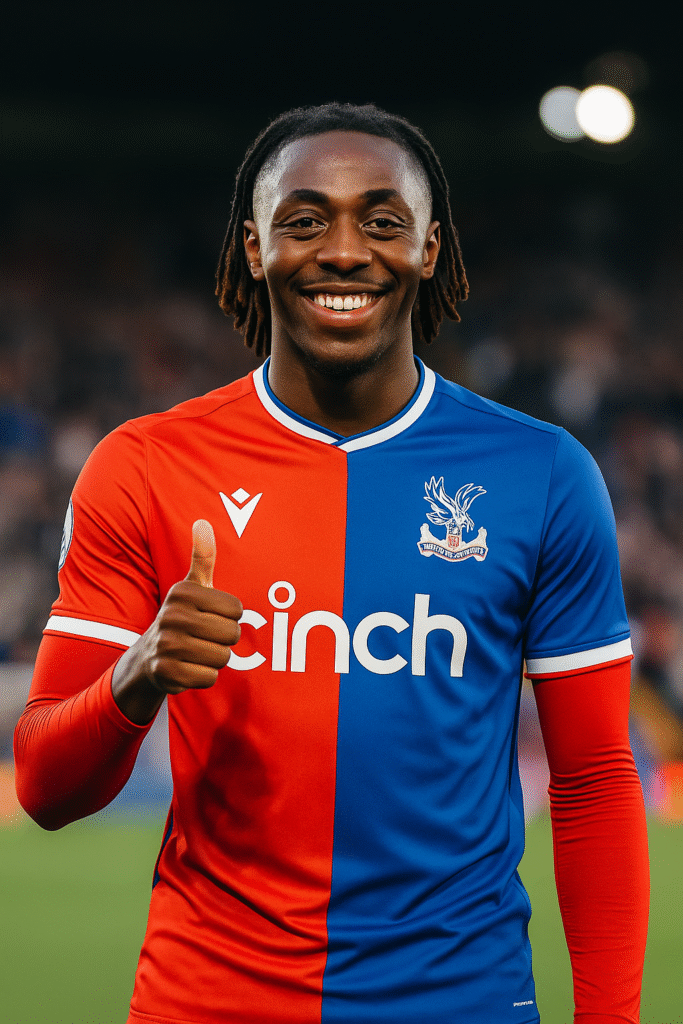


Leave a Reply